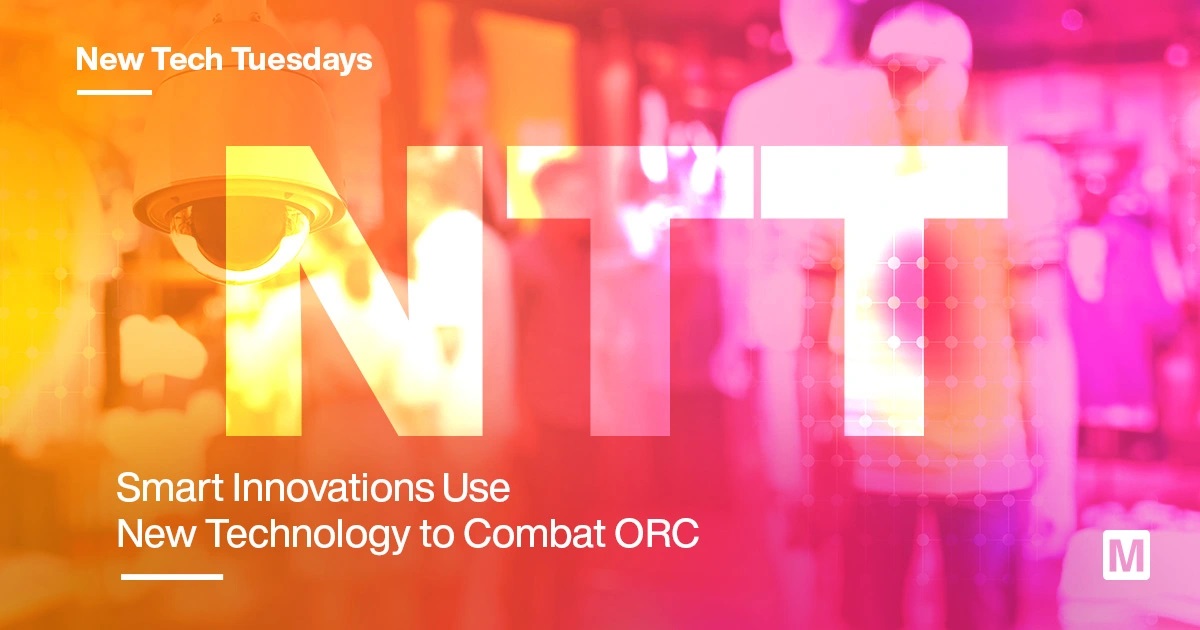According to a 2023 report from the National Retail Federation (NRF), organized retail crime (ORC) is growing in both scope and complexity. The report defines ORC as “the systematic large-scale theft of retail goods from manufacturers, logistics and transportation providers, distributors, or retailers and the subsequent resale of stolen goods for financial gain to wholesalers, retailers, or individual consumers, typically for a fraction of the retail cost.”
NRF says that two-thirds of the retail shrink rate—a measure of inventory control that shows the percentage of inventory lost between the time it is produced and when it is sold—is primarily due to internal and external theft.
In this week’s New Tech Tuesday, we delve into the technologies retailers are relying on to help curb the wave of ORC.
A New Approach Using New Technologies
Retailers are choosing to use innovative technologies and shying away from lock down store practices to combat ORC. Project Unlock from Lowe’s Innovation Labs—part of home improvement retailer Lowe’s—uses digital point of sale (POS) activation and transparent purchase records.[1] For example, an RFID chip containing a power tool’s unique serial number is embedded into the power tool, and a matching QR code is added to the retail box. When the tool is paid for at the counter, a POS RFID scanner reads the box’s QR code and sends the activation key, which is unique only to that power tool. If the tool is stolen, it will not work. Additionally, Project Unlock uses blockchain to track and authenticate valid purchases, safeguarding that no shopper’s information is tracked. With this new technology, retailers, manufacturers, and law enforcement can scan the items to ensure they are not dealing with stolen merchandise.
Another approach is the use of smart shopping carts that stop rolling when an alarm is triggered (Figure 1). On a recent visit to my local Home Depot, I was startled when my shopping cart suddenly stopped, and the alarms went off as I exited the store. My first thought was that I had rolled over a rock and instinctively tried to push the cart harder to see if it would dislodge, but to my surprise, it did not. Suddenly, I saw the self-checkout attendant come out to tell me the issue was that my cart had erroneously triggered the alarm, locking the shopping cart’s wheels. The attendant reset the alarm, and my cart was able to roll again. It is evolving technology like this that retailers are turning to for help in reducing theft.



Figure 1: Retail shopping cart with anti-theft security technology. (Source: Author)
The Newest Products for Your Newest Designs®
As ORC becomes a more complex issue for retailers to handle, we see technology emerging to match that complexity and lend retailers another layer of security. This week, we look at new products from NXP Semiconductors and FRAMOS that are designed to meet retailers’ needs.
The NXP Semiconductors PN7642 Single Chip NFC Solution offers a comprehensive answer for preventing retail theft. With its advanced near-field communication (NFC) technology, the PN7642 enables secure and efficient communication between NFC-enabled devices and tags. Engineers can leverage this solution to implement robust anti-theft measures in retail environments. By embedding NFC tags into merchandise and integrating PN7642-enabled readers into store infrastructure, retailers can track inventory, authenticate products, and deter theft attempts. The PN7642’s secure communication protocols and customizable features empower engineers to design scalable and reliable ORC prevention systems, contributing to a safer and more secure retail environment.
The PN7642’s key features include:
- Arm® Cortex®-M33 core running at 90MHz
- 20kB RAM, 180kB flash
- NFC Forum-compliant NFC reader
- High output power of 2W and 350mA maximum operating transmitter current
- Hardware acceleration for symmetric and asymmetric algorithms
- Software protection against side-channel attacks
The FRAMOS FSM-IMX296 Sensor Module offers engineers a compact and high-performance solution for embedded vision applications, like preventing ORC. With the Sony IMX296 sensor onboard, this module provides a native resolution of 1.6MP, enabling detailed and accurate image capture. Engineers can integrate the FSM-IMX296 into surveillance systems, enabling real-time monitoring of retail environments. By leveraging the module’s global shutter technology and high sensitivity, retailers can effectively detect suspicious activities, identify perpetrators, and deter theft incidents. Additionally, its compact form factor facilitates seamless integration into existing security infrastructure, making it an ideal choice for ORC prevention solutions.
Key specifications of the FSM-IMX296:
- Sony IMX296 sensor
- Compact 26.5mm × 26.5mm module
- 6MP native resolution
- Global shutter technology
- High sensitivity for low-light conditions
Tuesday’s Takeaway
ORC poses a significant threat to retailers, with financial losses soaring and tactics becoming increasingly sophisticated. Retailers are grappling with the fallout, with some resorting to store closures, reduced hours, and product selection cuts to mitigate losses. However, innovative technologies like those from NXP Semiconductors and FRAMOS offer hope in combating ORC.
Additionally, initiatives like Lowe’s’ Project Unlock, utilizing blockchain and RFID technology to safeguard against theft, are leading the way. From deterrence tactics to cutting-edge solutions like modular vending machines and smart cameras, retailers are adapting to the challenge of ORC with creativity and resilience.
To learn more, visit www.mouser.com












